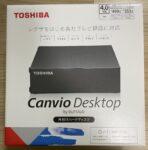Advantages and precautions of making your own external SSD with USB connection
I needed an external portable SSD (for high-speed transfer of large amount of data & for boot disk) and made it myself.For those who are thinking of making their own, here are some points to note.
Benefits of making your own external SSD
Commercial products are also available in categories such as portable SSDs and external SSDs.The merit of creating it yourself
- Cheaper than buying off-the-shelf products
- Can be configured with performance that suits your computer
- You can choose the case of your favorite design
- Long warranty period
For a 2.5-inch external SSD, it's about 10-20% cheaper to make your own than to buy an off-the-shelf product (M2 SSDs are more expensive, so it's even better).For example, Kakaku.com's most popular external SSD (480GB) is priced at just under 7000 yen (as of June 2019).
If you make your own with the same specifications.
The special case is 1000 yen, and the built-in SSD is 5000 yen, for a total of about 6000 yen.The larger the capacity, the more profitable it will be.
In terms of performance, the data transfer speed depends on the USB terminal on the computer side, so even if you buy a high-spec one, you may not be able to make full use of it (described later).Many of the external SSDs on the market have higher performance as the capacity increases, so it may be a waste of performance.
In addition, you can choose the case as you like, such as focusing on durability and appearance.
Like this, there are cases with various designs.
Most importantly, if you buy the built-in SSD directly, you have a 3-5 year manufacturer's warranty.A company that sells portable SSDs may procure the SSD used internally from another manufacturer.In this case, the warranty period is usually as short as 1-3 years.
Precautions when making your own
The information you need to know when preparing an external SSD is
- SSD standard: "2.5 inch SSD" or "NVMe M.2 SSD"
- USB standard: Connection port between case and computer
- SSD thickness and case side correspondence thickness: 7 or 9.5 mm (recent SSD is almost 7 mm)
On the other hand, if you don't understand this and buy it in the dark clouds, you may end up making an external SSD with a transfer speed that you can't get on your own computer at a wastefully high price, or you may not be able to take advantage of the SSD speed.
SSD standard
When buying a built-in SSD, which one should you check, "2.5 inch SSD" or "NVMe M.2 SSD"?
| 2.5 inch SSD | NVMe M.2 SSDs | |
| transfer speed | Approximately 600 MB / s (SATA3.0 connection) | Approximately 3200 MB / s (PCIe 3.0 x 4 connection) |
| price | cheap | high |
| Fever | Few | high |
The current USB connection does not maximize the speed of the M.2 SSD, so 2.5 inches is recommended (see next section).
Since the transfer speed is a theoretical value, it will actually be a little lower.
USB terminal standard
Check the USB standard of the special case and computer before purchasing.
Most modern PCs have USB 3.0, but USB 3.1 Gen 2 is still rare unless it's a high-speed PC.
| USB 2.0 | USB 3.0 (USB 3.1 Gen1) | USB3.1 Gen2 | |
| transfer speed | 60 MB / s | 500 MB / s | 1000 MB / s |
| Compatible SSD price | Safe | 中 | high |
| Corresponding case price | Safe | 中 | high |
In the table above, the transfer speed of a 3.0-inch SSD with a SATA2.5 connection was up to 600 MB / s).However, since this is a theoretical value, it is actually a little lower.Therefore, 500 MB / s USB 3.0 is reasonable.By the way, USB 3.1 Gen1 is the same as USB3.0.
NVMe M.2 SSD can transfer at speeds up to about 3200 MB / s, but the current performance on the USB side becomes a bottleneck, and the speed can only be utilized up to 1000 MB / s (USB 3.1 Gen2).
For those who are a little more particular
There is a special case that says "UASP compatible" even with the same USB 3.0, which is faster.However, a compatible driver is also required on the computer side.
Abbreviation for USB Attached SCSI Protocol
UASP mode compatible_2.5 inch case
It is a transfer method that maximizes the transfer speed of 3.0 Gbps of USB5.
Data can be transferred at ultra-high speed using UASP mode.
Another point is whether the SSD and the special case are made of metal.It is related to the life of SSD from the viewpoint of heat dissipation.For M.2 SSDs that generate a lot of heat, it is safe to use metal.
However, since it has been confirmed in endurance tests (especially with 2.5-inch SSDs that originally generate less heat), I think that there is no problem with either.If you're willing to work hard to use it longer, choose metal.











In-Depth Discussions
Comment list
There are not any comments yet